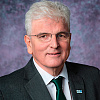International statesmen Des Browne, Wolfgang Ischinger, Igor Ivanov, and
Sam Nunn call on Western and Russian leaders to take immediate steps to
reduce the risk of a dangerous military confrontation. This report offers
recommendations to avoid accidents, enhance predictability, and build
confidence.
Russia and the West are at a dangerous crossroads. During the past several years, we have been in a state of escalating tension, trapped in a downward spiral of antagonism and distrust. With our militaries moving closer—in the skies over the Baltic Sea, in the depths of the North Atlantic, and across the Middle East—the risks of miscalculation or accident and escalation are unacceptably high. Unless Western and Russian leaders take immediate steps to improve transparency and enhance predictability, they may inadvertently risk a deadly confrontation.
This paper, which is based on a survey of leading defense and security experts from the United States, Russia, and Europe, puts forward nine urgent and practical recommendations to ensure that we avoid the worst kind of catastrophe: a nuclear incident involving NATO and Russian forces. The measures are focused on preventing accidents, enhancing predictability, and building confidence. These include recommendations to fly military aircraft with transponders turned on, to establish “safe distance” protocols for ships and aircraft, to demonstrate restraint in military exercises, and to improve transparency for deployments of both missile and missile defense systems.
Perhaps most importantly, this paper recommends that Western and Russian leaders initiate a dialogue focused on strategic stability and nuclear risk reduction. Dialogue should never be seen as a sign of weakness—it is essential for nuclear risk reduction to protect our citizens. Military-tomilitary discussions should be at the top of the list of near-term steps to reduce risk.
Even during the darkest days of the Cold War, we maintained robust channels of communication to prevent nuclear accidents, miscalculations, or nuclear escalation. Today, nearly all of these channels have eroded, and our political and military leaders seldom talk to one another. Simply put, it is national security malpractice that today we have virtually no dialogue among our capitals on reducing nuclear risks. This must change.
Absent engagement, nuclear risks will only continue to increase, endangering all of us. The time to act on our common security interests is now.
Foreword by Des Browne, Wolfgang Ischinger, Igor Ivanov, and Sam Nunn
Report by Robert E. Berls, Jr., and Leon Ratz.
NTI Report "Rising Nuclear Dangers: Steps to Reduce Risks in the Euro-Atlantic Region", 1 Мб








